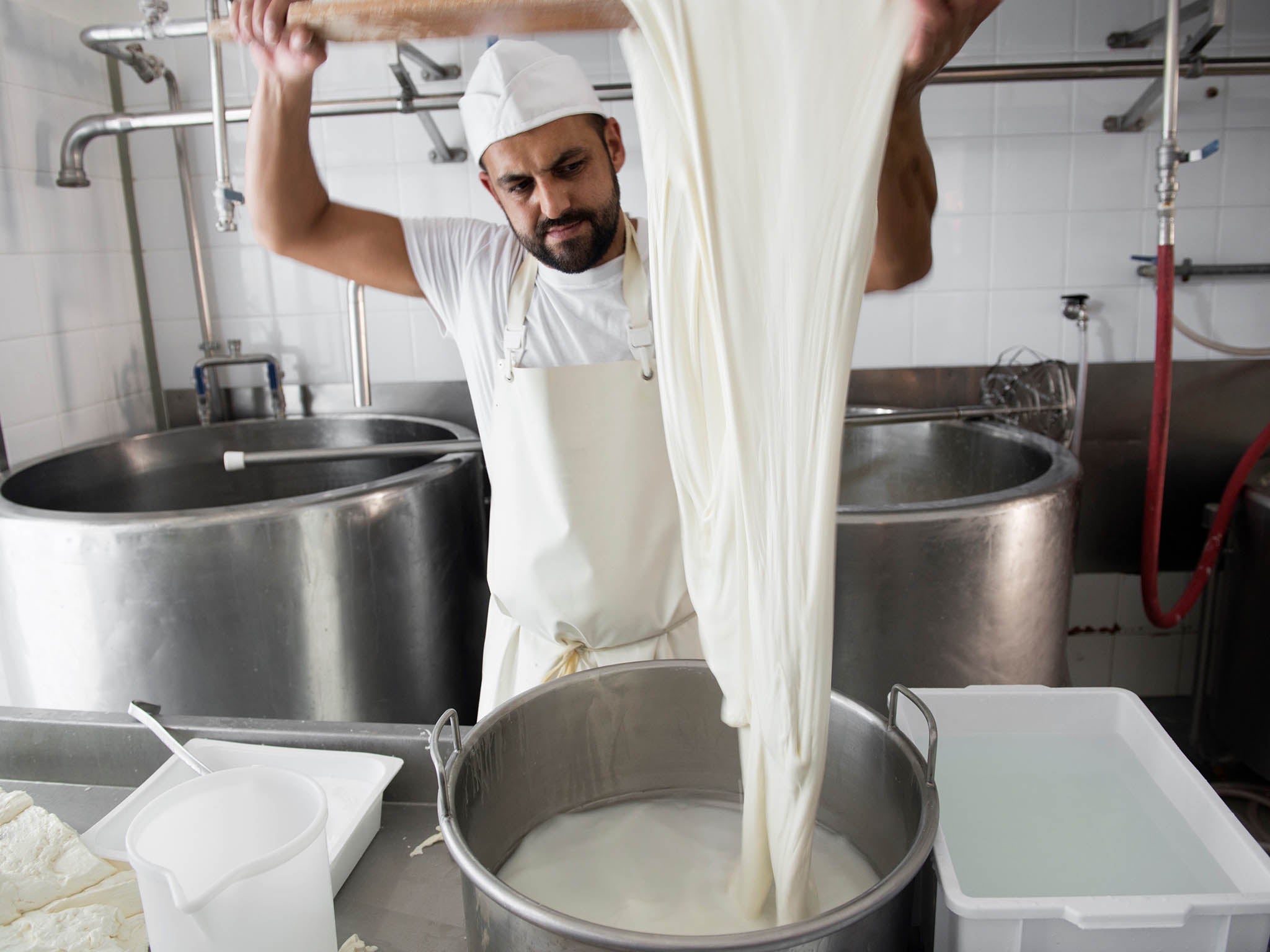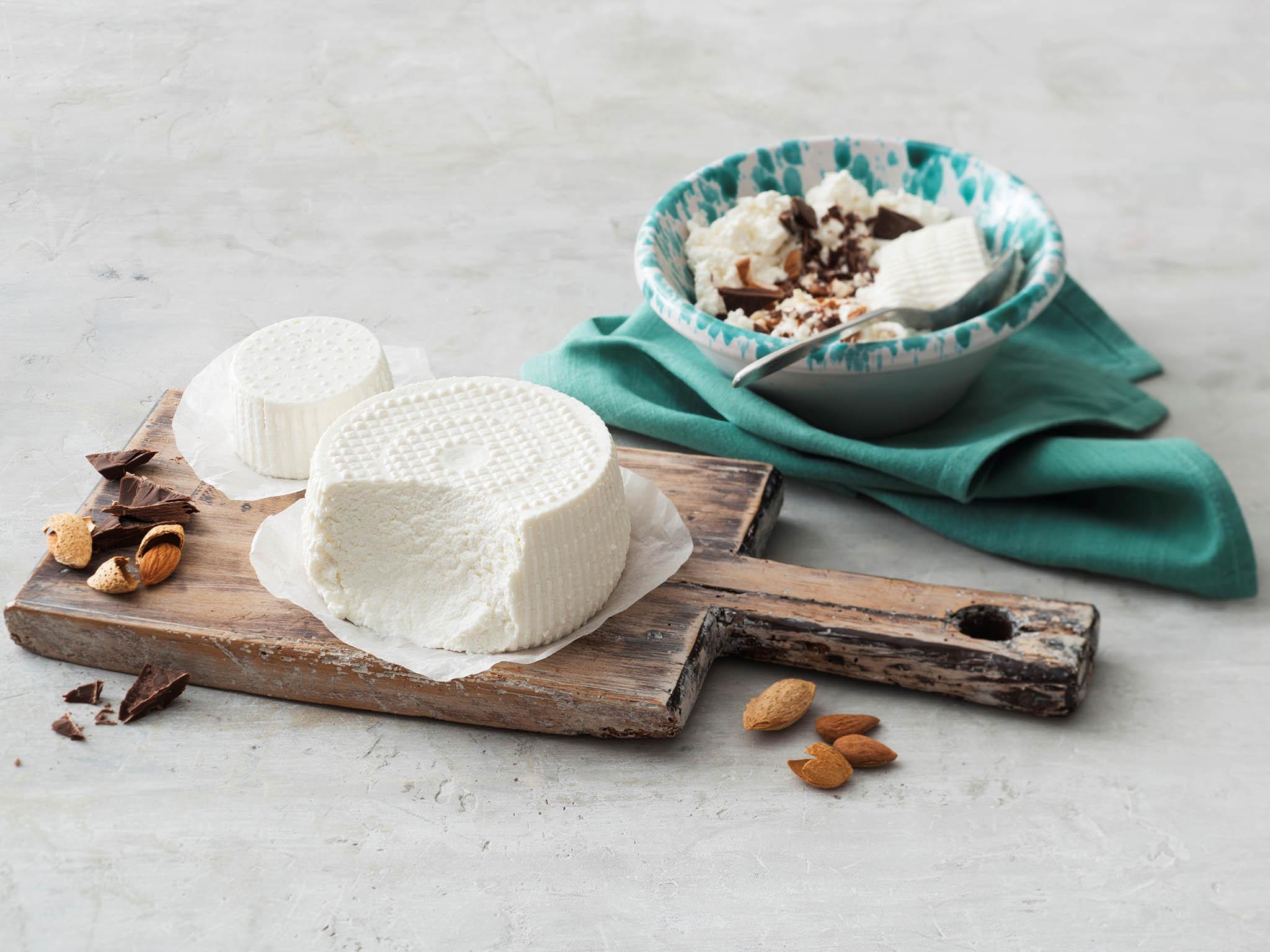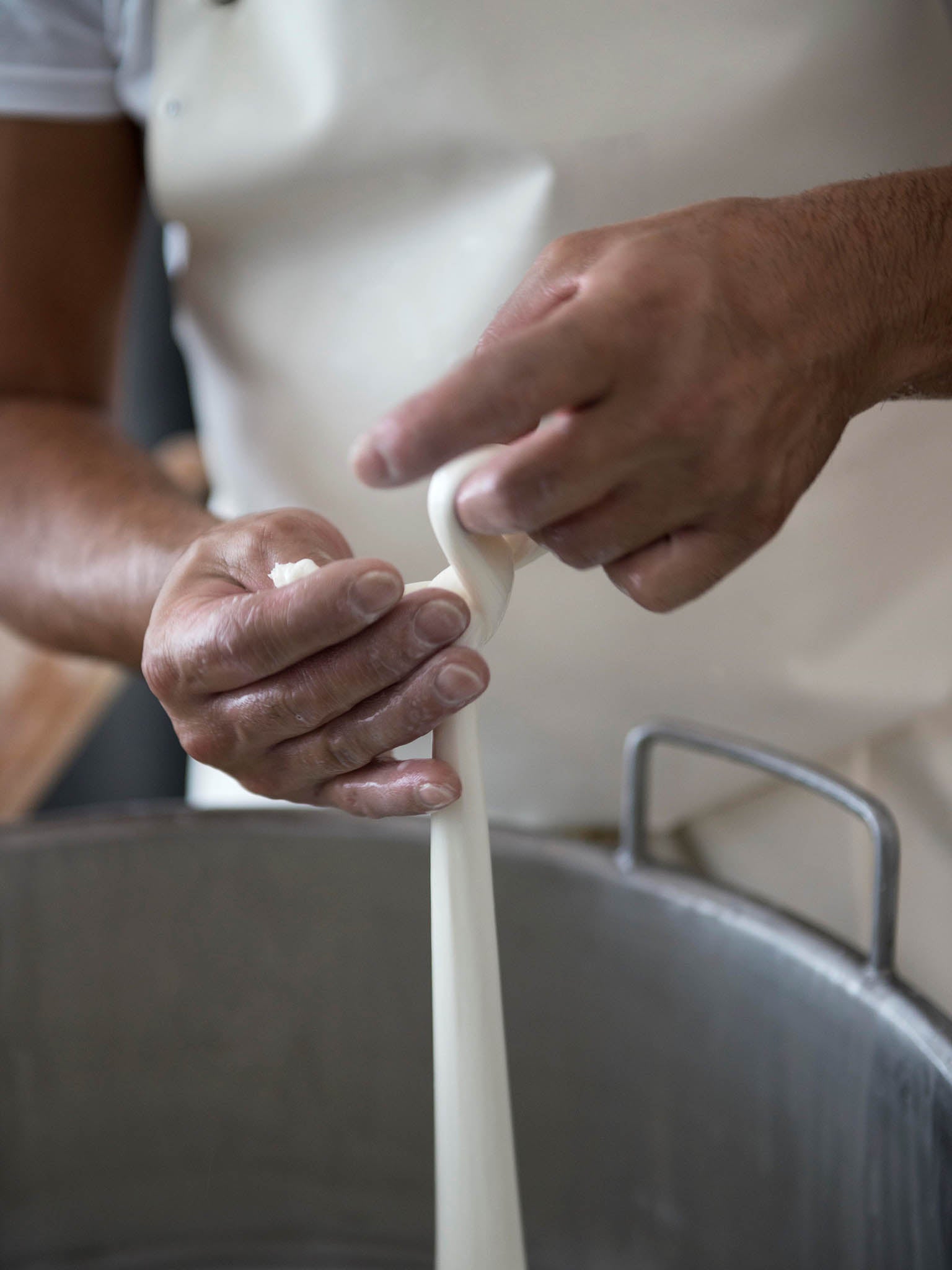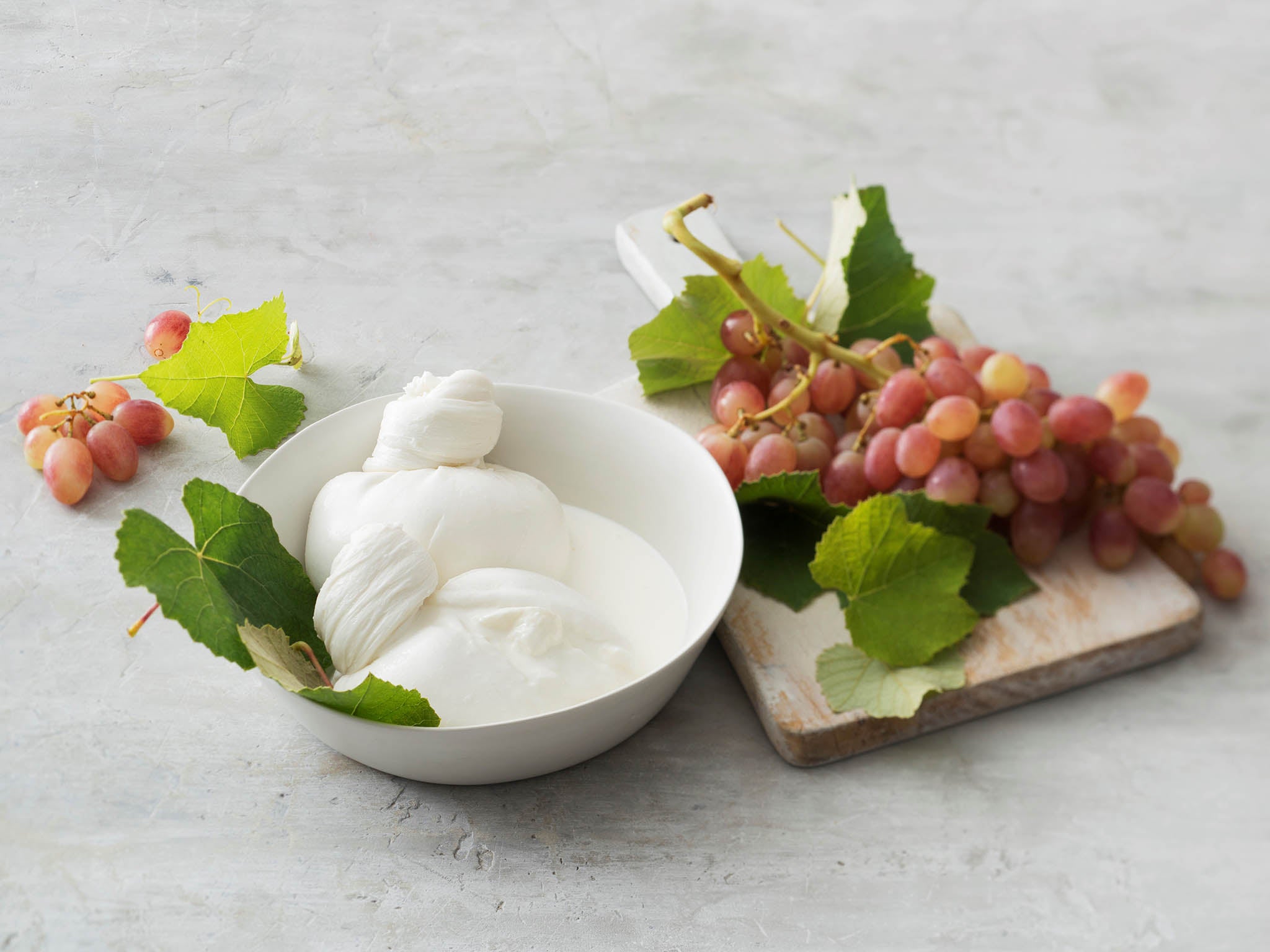The Italian cheesemakers moving to Britain to make mozzarella
After becoming frustrated with the waning quality of milk paired with the increasing intensive farming methods, many producers have found better ingredients outside of their homeland. Clare Finney meets those who made the move

Your support helps us to tell the story
From reproductive rights to climate change to Big Tech, The Independent is on the ground when the story is developing. Whether it's investigating the financials of Elon Musk's pro-Trump PAC or producing our latest documentary, 'The A Word', which shines a light on the American women fighting for reproductive rights, we know how important it is to parse out the facts from the messaging.
At such a critical moment in US history, we need reporters on the ground. Your donation allows us to keep sending journalists to speak to both sides of the story.
The Independent is trusted by Americans across the entire political spectrum. And unlike many other quality news outlets, we choose not to lock Americans out of our reporting and analysis with paywalls. We believe quality journalism should be available to everyone, paid for by those who can afford it.
Your support makes all the difference.It’s difficult to think of a food more irrefutably associated with Italy than mozzarella and its big brother burrata.
The perfect partner for pizza, pasta or a simple drizzle of extra virgin olive oil, its centrality to the country’s cuisine is even (unofficially) enshrined in its famous tricolour – mozzarella, tomato and basil – flag.
That an Italian could tolerate the mere existence of British mozzarella seems unthinkable, let alone that they would like it enough to move here and make it. Still, here we are.
It’s 2019, plants are taking selfies, the leader of the free world can’t string a sentence together, and some of the best mozzarella in the world is being made in Britain by disillusioned Italians.
Take Claudio Sarfati, for example. A third-generation cheesemaker from Latina, Rome, Sarfati came over to England after becoming increasingly frustrated with the quality of milk in his homeland.

Though popular imagination has it that everything edible is better in Italy, the country’s dairy industry has changed beyond recognition since his grandfather established the family business, De Luca, in 1940. “Farming is dying off. Finding organic milk in Italy these days is really hard.”
Sarfati adds: “While milk from high-welfare farms whose cows graze on pasture most of the year flows readily in Britain (for those who can afford it) most ‘Italian’ milk comes from intensive farming, or from Germany, Hungary and Poland, because it’s so much cheaper.
“Organic milk, and especially organic cream, is a very expensive raw material – so factories tend to buy conventional, cheaper raw materials. But for us, the provenance is fundamental.”
Which is how he and his team have wound up in Wiltshire: just a few hundred metres away from the organic dairy farm from which they source milk for mozzarella and burrata.
“The cows are well treated: they’re milked just once a day, and the rest of the milk goes to the calf, so they aren’t fed a milk substitute,” says Sarfati.
A vegetarian of five years, he feels a moral obligation as a producer to prioritise animal welfare – an obligation that serves him well when it comes to today’s ever-more ethically conscious audience.
You can take a mozzarella maker out of Italy, but you can’t take Italy out of a mozzarella maker
More pertinently still, so far as De Luca’s cheese is concerned, the herd spends much of the year roaming freely across 500 acres, grazing a rich, biodiverse pasture.
It might be a stretch to say happy cows produce better milk, but there’s plenty of evidence to show the milk from grass-fed cows is richer in flavour. Creamy butterfat also makes for yellower cheeses than the snow-white balls we are used to, but you get over it once you realise that, like the lustrous dark pink of a quality steak, the yellow-tinge of a mozzarella or burrata is a sign of serious flavour.

“The milk changes from day to day, because the cows are feeding in different parts of the landscape every day, and that can be a challenge – but that’s where our years of knowledge and experience in this style of cheeses come in,” says Sarfati.
“You can take a mozzarella maker out of Italy, but you can’t take Italy out of a mozzarella maker. De Luca has been making cheese for 60 years in Latina. We have a lot of family know-how.”
Like mozzarella in a toasted ciabatta, the family know-how of Italian cheesemakers just keeps stretching: from Latina to Wiltshire, Campania to London, Puglia to Somerset.
Simona Di Vietri of La Latteria in Acton, London cut her curd-stretching teeth with her cousin, whose dairy is based just north of Milan. She says: “We source our milk from the exact same breed of cow as he does – but there they are in barns most of the year, whereas here they’re on grass. It makes a massive difference.”
The result – rich, creamily yellow burrata and mozzarella, ballooning and supple – are favoured by the likes of Michel Roux Junior, Ollie Dabbous and Jason Atherton; yet it’s not just Britain’s green and pleasant pastures Di Vietri and her peers are setting their sights on. Our national appetite for these cheeses is enormous. “The Anglo-Saxons love anything creamy,” laughs Sarfati, when I ask him why he thinks burrata has become such a staple of the starter menu.
“The idea of La Latteria was really borne out of the size of the market in the UK,” Di Vietri says simply – of restaurants and individuals. “There was such an opportunity to offer something of a better quality than that being imported by distributors.”
Which brings us to freshness, and Tommaso Valenzano: the man who makes burrata and scamorza “live” at Borough Market. He’s not a permanent fixture – Valenzano travels the world as a cheesemaking consultant – but on those days he is there, the magician-like fluidity with which he scalds, stretches and moulds the curds at Bath Soft Cheese stall draws tourists and regulars alike.

“He’s an artist – he is fantastic,” says Hugh Padfield, owner of Bath Soft Cheese; yet Valenzano’s presence at Borough Market, rather then Padfield’s dairy in Somerset, isn’t just style. It’s about substance. “When I first hired Tommaso, he explained that in Italy the most important feature of mozzarella-type cheeses was their freshness; that while the curd could be transported for a day, it should be stretched as close to the market as possible,” Padfield adds.
The reason the Italian-born burrata you bought in your local fromagerie doesn’t taste as it did on your Sardinian jolly is not that the milk is better. It’s not even necessarily that the cheesemakers are better. It’s because when it comes to mozzarella and burrata in Italy, freshness is all.
“It’s like buying two-day-old bread,” says Valenzano, when I catch him after a stretching shift at the market. “Think of the logistics; if you import burrata from Italy, by the time it gets to distributors, then to the shops and then to you, it could be five or seven days before you taste it – and yet like bread, the taste and texture of this cheese is not the same even just a day after it’s been made.” It’s a different beast, Di Vietri agrees.
Her vision for Richmond’s La Latteria was that Britons would be able to share the experience of burrata she had as a child in Italy – but on their doorstep, without travelling, and with all the advantages her locally-sourced milk afforded for the economy, climate and flavour. “The cheese is produced at night, and it’s out at 7am to be distributed to restaurants across London, ready for the lunch service,” she says proudly.
Three years ago these restaurants might have kept the true source of their “Italian” cheese under their toque, for shame of their inauthenticity. Now you’ll find La Latteria and their contemporaries listed clearly as producers: their fresh, flaxen, effortlessly creamy cheeses a richly flavoured tribute to British milk, Italian talent and international ties.
Join our commenting forum
Join thought-provoking conversations, follow other Independent readers and see their replies
Comments